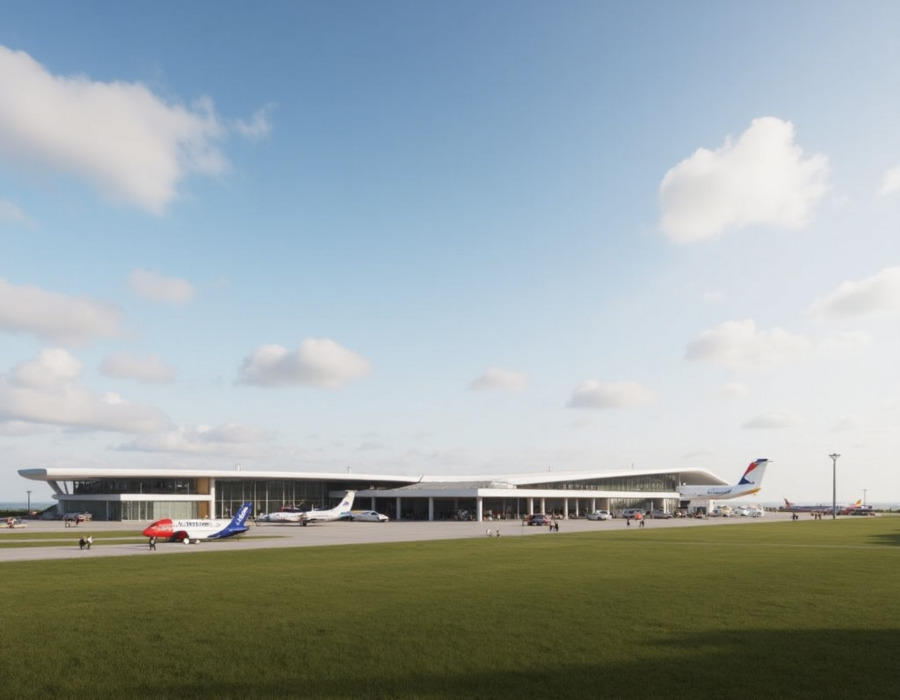Home » AIRLINE NEWS » Manston Airport in the United Kingdom Set for Spectacular Comeback with Multi-Million Pound Overhaul and Ambitious Plans for Low-Cost European Flights
Thursday, June 26, 2025
Manston Airport in the United Kingdom is preparing for a bold return to the aviation landscape through a £500 million transformation aimed at turning the historic airfield into a thriving hub for low-cost European travel. After nearly a decade of closure, the site is undergoing extensive redevelopment, including new terminals and runway upgrades, with the goal of attracting major budget carriers and meeting growing regional demand for affordable international flights. The project not only seeks to boost connectivity in southeast England but also revives a site of deep historical significance and strategic value.
Kent’s Manston Airport Poised for Revival with Budget Flights After a Decade of Closure
A long-dormant airport in southeast England could soon return to the skies, with plans underway to transform it into a hub for low-cost European travel. Manston Airport in Kent, once a historic military airbase, is undergoing an ambitious £500 million redevelopment aimed at bringing both freight and passenger flights back to the region by 2028.
Closed since 2014, Manston Airport’s story is steeped in aviation legacy. Originally built as a Royal Air Force station, it played a pivotal role in both the First and Second World Wars. Today, nearly a century after its early aviation days, the site is being reinvented with modern infrastructure while preserving its strategic value.
The scale of the investment is substantial. The project includes the construction of new passenger terminals and the modernization of runways to accommodate both cargo and commercial aircraft. Manston’s single runway — measuring 2,748 meters in length and 60 meters in width — was once capable of handling Concorde and even designed with the capacity to accommodate a NASA Space Shuttle in an emergency. This engineering advantage gives it a unique edge over many regional airports.
The airport’s relaunch is being spearheaded by RiverOak Strategic Partners, who secured a Development Consent Order (DCO) in 2020. Though the approval process faced legal challenges, including an initial judicial overturning and subsequent resubmission, the project was ultimately re-approved, paving the way for reconstruction to begin.
As the airport’s freight capabilities are being prioritized in the initial phases of the relaunch, plans for scheduled passenger services remain on the table. If the cargo operations meet expectations, flights to destinations such as the Netherlands, Spain, Cyprus, and Malta could be introduced. Earlier reports suggested that negotiations had taken place with budget carriers including Ryanair, Wizz Air, and easyJet, although no recent confirmations have been issued by the operators or RiverOak.
Nevertheless, market trends appear promising. Nearby airports, such as London Luton and Stansted, have experienced strong passenger demand in recent years. This indicates potential capacity and appetite for another airport serving southeast England, especially for budget-conscious travellers seeking alternative options outside of London’s busier air hubs.
Since Manston’s closure in 2014, the site has seen intermittent use. One of its most practical applications was as an overflow lorry park to support logistics during periods of disruption to Channel crossings. Its proximity to Dover and the Channel Tunnel made it a suitable contingency location during peak freight crises, particularly in the wake of Brexit-related congestion.
The last passenger flight from Manston departed in April 2014, bound for Amsterdam. At the time, financial losses had led to the airport’s shutdown despite local campaigns to keep it operational. Its closure left Kent without a major commercial airport, with only smaller aviation facilities such as Lydd Airport and Rochester Airport continuing to operate in the region.
Beyond commercial ambitions, Manston also holds historic and symbolic value. During the Second World War, it endured repeated bombings due to its frontline location and once housed several unexploded bombs on site. Its wide and long runway made it a critical emergency landing zone for damaged Allied aircraft returning from missions across continental Europe.
Reopening the airport not only symbolizes the revival of regional air connectivity but also honors its significant past. Manston’s transformation from a war-torn airfield to a modern aviation gateway reflects broader shifts in regional development, infrastructure investment, and post-Brexit transport planning.
As the redevelopment continues, the focus remains on launching cargo services first, with a view to eventually branching into passenger operations if market conditions align. Though formal announcements from major airlines have yet to materialize, the groundwork has been laid for Manston to take off once again — this time with an eye toward budget-friendly travel and strategic freight operations.
The United Kingdom’s Manston Airport is undergoing a £500 million revival to become a major hub for low-cost European travel, aiming to boost regional connectivity and restore its historic aviation legacy.
If successful, the project could restore Kent’s place on the UK aviation map and ease pressure on London’s saturated airport network. With state-of-the-art upgrades and a heritage-rich legacy, Manston Airport may be on the verge of a powerful comeback after more than a decade on the ground.
